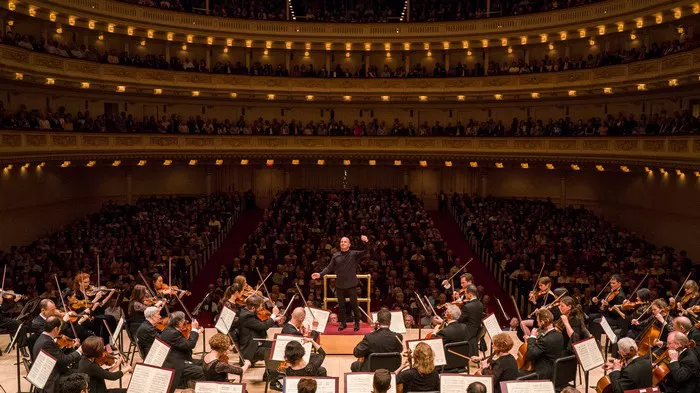Classical music, known for its rich history and complex compositions, is now experiencing a new wave of creativity through remixes. This blending of old and new styles creates a unique listening experience that appeals to diverse audiences. This article explores the world of classical music remixes, examining their history, techniques, and impact on both classical and contemporary music.
I. Introduction to Classical Music Remixes
1. What is a Classical Music Remix?
A classical music remix involves taking a traditional piece of classical music and reimagining it with modern production techniques. This can include altering the tempo, adding electronic elements, or changing the arrangement to fit contemporary genres.
2. Why Remix Classical Music?
Remixing classical music serves several purposes:
Reimagining: It breathes new life into old compositions.
Accessibility: It makes classical music more accessible to younger audiences.
Innovation: It allows musicians to experiment with classical elements in new ways.
II. The Evolution of Classical Music Remixes
1. Historical Context
Classical Music Origins
Classical music, spanning from the Baroque period (1600-1750) to the Romantic era (1800-1900), is known for its intricate compositions and orchestral arrangements. Composers like Bach, Mozart, and Beethoven created timeless pieces that are still celebrated today.
Early Influences on Remixes
In the early 20th century, composers like Igor Stravinsky and Arnold Schoenberg began experimenting with traditional forms. While not remixes per se, these innovations set the stage for future reinterpretations of classical music.
2. The Rise of Modern Classical Remixes
Electronic Music and Classical Fusion
The 1980s and 1990s saw the rise of electronic music. Producers began incorporating classical elements into electronic tracks, leading to a new genre of classical remixes. Artists like Moby and The Orb were pioneers in this field.
Popularity in the 2000s and Beyond
The 2000s brought a surge of interest in classical remixes. Artists such as Max Richter and Ludovico Einaudi gained popularity for their contemporary takes on classical music. These artists blend classical themes with modern sounds, creating a new genre that resonates with a broad audience.
III. Techniques for Remixing Classical Music
1. Analyzing the Original Composition
Understanding the Structure
Before remixing, it’s crucial to understand the original composition’s structure. This includes its melody, harmony, rhythm, and orchestration. Knowing these elements helps in making informed decisions during the remixing process.
Identifying Key Elements
Focus on the key elements that define the piece. This might include memorable melodies, harmonic progressions, or rhythmic patterns. Highlighting these elements in the remix ensures that the new version retains its classical essence.
2. Incorporating Modern Production Techniques
Tempo and Rhythm Changes
Adjusting the tempo and rhythm can give the piece a fresh feel. Speeding up or slowing down the composition can change its emotional impact and make it fit better with contemporary genres.
Adding Electronic Elements
Incorporating electronic sounds, such as synths and drum machines, can create a fusion between classical and modern music. These elements can add a new layer of texture and rhythm to the remix.
Re-arranging the Composition
Re-arranging involves changing the structure of the piece. This might include adding new sections, repeating certain parts, or altering the instrumentation. This technique helps in creating a unique version while maintaining the original’s integrity.
IV. Case Studies of Notable Classical Music Remixes
1. Max Richter’s Recomposition
Background
Max Richter is known for his reconstructions of classical works. His album “Recomposed by Max Richter: Vivaldi – The Four Seasons” is a notable example. Richter reimagines Vivaldi’s Baroque masterpiece with modern orchestration and electronic elements.
Impact
Richter’s work has been praised for its innovative approach. It brings Vivaldi’s music to a new audience while respecting the original composition. The remix has been used in various media, further popularizing classical music.
2. Ludovico Einaudi’s Modern Touch
Background
Ludovico Einaudi is an Italian pianist and composer known for his minimalist compositions. His work often features classical influences with a contemporary twist. Pieces like “Divenire” and “Fly” showcase his ability to blend classical and modern elements.
Influence
Einaudi’s music has been widely used in film and television, demonstrating the appeal of modern classical remixes. His compositions bridge the gap between classical tradition and modern sensibilities.
V. The Future of Classical Music Remixes
1. Emerging Trends
Integration with Other Genres
Future classical remixes are likely to continue blending with other genres. Collaborations with hip-hop, jazz, and ambient music can create innovative new sounds.
Technological Advancements
Advancements in technology, such as AI and digital audio workstations, will offer new possibilities for remixing. These tools can provide more precise control over the remixing process and open up new creative avenues.
2. Potential Challenges
Maintaining Integrity
One challenge is maintaining the integrity of the original composition. Remixing requires a delicate balance between innovation and respect for the classical piece.
Audience Reception
Another challenge is how traditional classical music audiences receive remixes. Ensuring that remixes are both respectful and innovative can be a fine line to walk.
See Also: Classical Music for Kids: A Deep Dive into Timeless Melodies
VI. Conclusion
Classical music remixes represent a dynamic fusion of tradition and modernity. They offer a fresh perspective on timeless compositions and create new opportunities for musical exploration. As technology and genres continue to evolve, classical remixes will likely remain a vibrant and exciting field, bridging the gap between past and present.
By understanding the history, techniques, and future trends of classical remixes, we can appreciate how classical music continues to inspire and innovate. Whether through electronic influences or contemporary arrangements, the remixing of classical music is a testament to the genre’s enduring relevance and adaptability.

